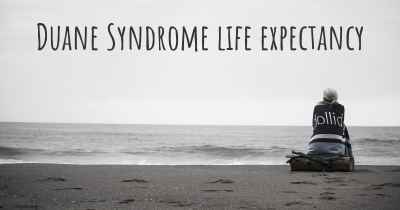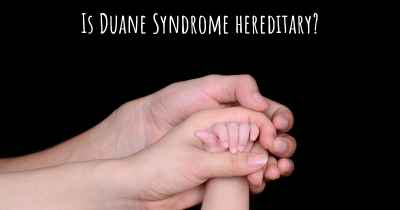What is the history of Duane Syndrome?
When was Duane Syndrome discovered? What is the story of this discovery? Was it coincidence or not?

Duane Syndrome, also known as Duane Retraction Syndrome or Stilling-Turk-Duane Syndrome, is a rare congenital eye movement disorder that affects the muscles responsible for moving the eyes horizontally. It was first described by ophthalmologists Alexander Duane and Jakob Stilling in the late 19th century, and later further characterized by Arthur Turk in the early 20th century.
The history of Duane Syndrome dates back to the late 19th century. In 1887, Alexander Duane, an American ophthalmologist, published a paper describing a peculiar eye movement disorder in a patient. He observed that the affected individual had limited horizontal eye movement in one or both eyes, accompanied by retraction of the eyeball and narrowing of the palpebral fissure (the opening between the eyelids). Duane noted that the limitation of eye movement was most pronounced when attempting to move the eye towards the nose, while movement away from the nose was relatively unaffected. This unique pattern of eye movement restriction became known as Duane Syndrome.
Several years later, in 1896, Jakob Stilling, a German ophthalmologist, independently described a similar eye movement disorder. Stilling's observations closely mirrored those of Duane, and he also noted the characteristic retraction of the eyeball and narrowing of the palpebral fissure. Stilling's work further contributed to the understanding and recognition of this condition.
In the early 20th century, Arthur Turk, an American ophthalmologist, made significant contributions to the classification and understanding of Duane Syndrome. Turk expanded upon the work of Duane and Stilling by categorizing the disorder into three subtypes, now known as Duane Type 1, Type 2, and Type 3. He also proposed that the underlying cause of Duane Syndrome was a developmental abnormality of the sixth cranial nerve (abducens nerve) and its associated innervation. Turk's classification system and insights into the pathophysiology of the condition laid the foundation for further research and understanding of Duane Syndrome.
Over the years, researchers and clinicians have made significant progress in unraveling the genetic and anatomical basis of Duane Syndrome. It is now understood that Duane Syndrome is primarily caused by a developmental defect in the innervation of the extraocular muscles, particularly the lateral rectus muscle (which moves the eye outward) and the medial rectus muscle (which moves the eye inward). This defect is thought to occur during early embryonic development, resulting in abnormal connections between the cranial nerves that control eye movement.
Advancements in genetic research have also shed light on the hereditary nature of Duane Syndrome. Several genes, including CHN1, MAFB, and SALL4, have been identified as potential contributors to the development of this condition. However, the genetic basis of Duane Syndrome remains complex and not fully understood, as it can also occur sporadically without a family history.
Treatment for Duane Syndrome focuses on managing the symptoms and improving visual function. While there is no cure for the condition, various strategies can be employed to address specific issues. These may include the use of prismatic glasses to correct head posture and improve binocular vision, surgical interventions to correct abnormal eye alignment or improve eye movement, and vision therapy to enhance visual skills and coordination.
In conclusion, Duane Syndrome has a rich history that spans over a century. From its initial description by Alexander Duane and Jakob Stilling in the late 19th century to the classification system proposed by Arthur Turk in the early 20th century, our understanding of this rare eye movement disorder has significantly evolved. Ongoing research continues to unravel the genetic and anatomical underpinnings of Duane Syndrome, paving the way for improved diagnosis and treatment options for affected individuals.
Posted May 29, 2017 by Tessa 2000








